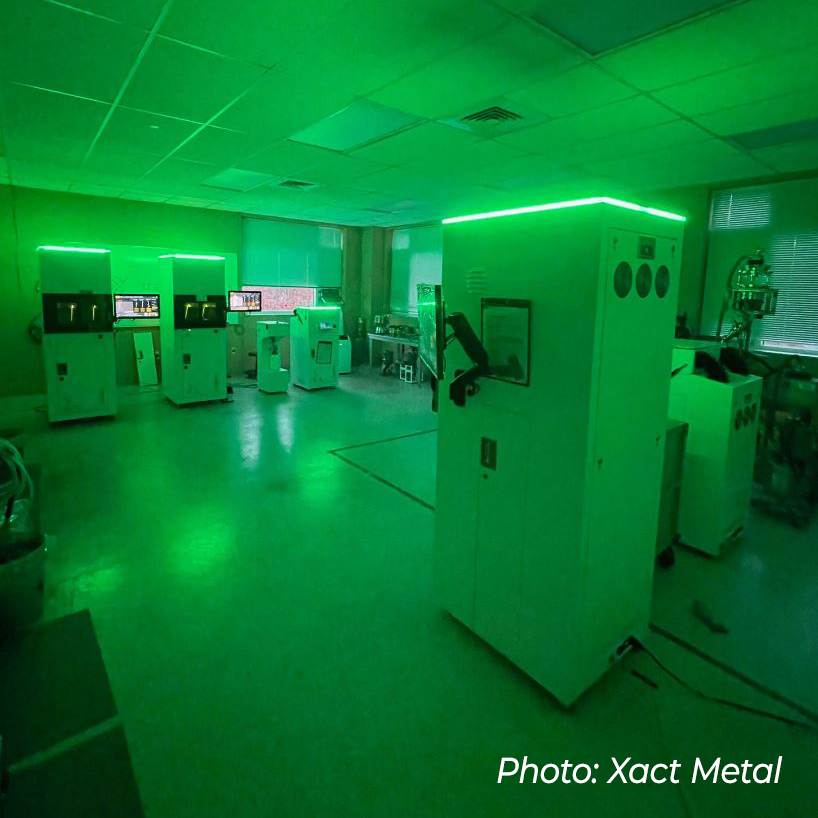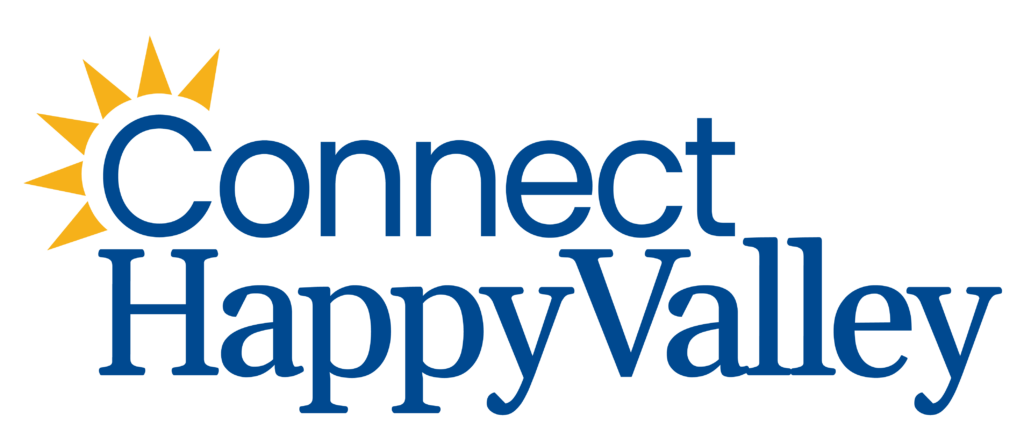By Carmen Bilén
Additive manufacturing (AM), also known as 3D printing, is the process of using a digital model to fabricate objects layer by layer by adding materials, including metals, ceramics and composites. Unlike traditional manufacturing methods, which typically involve subtracting material from a larger piece (by cutting or machining), AM builds objects from the ground up.
AM has many benefits for manufacturers, including its ability to create complex internal and external geometries and provide rapid prototyping and customization options. However, there are also disadvantages. AM has traditionally offered a more limited build volume than traditional manufacturing methods, it can be expensive because of the cost of the specialized equipment and it can be wasteful when parts have to be discarded due to distortion, cracking or material failure.
For Xact Metal, it’s critical that its metal powder-bed fusion (PBF) printers faithfully execute the designs its customers require — and that’s where PanOptimization’s innovative PanX software comes into play.

“At Xact Metal, we’re establishing a new level of price and performance in metal 3D printing by taking the essential specs of metal additive manufacturing and combining them with breakthrough technology,” said Juan Mario Gomez, CEO of Xact Metal, in a press release on Sept. 9, 2024. “We are pleased to partner with PanOptimization to bring cutting-edge simulation and optimization into the additive manufacturing industry.”
PanOptimization was founded by Pan Michaleris, CEO, a former professor in the Department of Mechanical and Nuclear Engineering at Penn State, and his former Ph.D. student, Erik Denlinger, Chief Engineer. The two had also worked together at Michaleris’ previous company, Pan Computing LLC. While Pan Computing focused on AM process simulation, PanOptimization takes simulation and optimization to a new level.
Predicting and improving the future

“The new software’s objective is to not only just predict but actually improve the future.”
“The previous business was to predict the future,” said Michaleris. “The new software’s objective is to not only just predict but actually improve the future… predict the outcome but also come up with suggestions as to what you have to do to solve technical problems.”
The PanX software helps companies like Xact Metal by identifying and helping to mitigate thermal and mechanical printing challenges, predicting how various metals will behave during the AM process and pre-compensating for the behavior of the material in the design – making it far more likely that the design will print as anticipated and avoid costly failure.
“Our software… in essence, it’s like a virtual experiment.”
“Our software… in essence, it’s like a virtual experiment. Rather than spend $100,000 to build this component, let’s build it virtually and see what happens,” said Michaleris. “[The] objective of this business is to tell you how to improve the design.”
“If you try to build a shape like [a cup], it’s not going to turn out in that shape,” explained Denlinger. “It will actually warp and distort as you build it because things get really hot, cool down, things distort, they build up high stress… there’s a lot of components to the response of a part that can make it fail during manufacturing [and make it] not able to perform its end use.”
“It’s not just that we can do it faster or more accurate, it’s that nobody else can even do it.”
“The old software that we had, there were a lot of competing solutions on the market,” he added. “The software was good but it’s not nearly what we have today… If we run a simulation in our new software, if probably runs 100 times faster for their parts than our old one… The new solution is so much more scalable than the old way that we used to solve the problem… it’s not just that we can do it faster or more accurate, it’s that nobody else can even do it.”
“Right now, it’s the only game in town, I’d say,” Michaleris concurred.
Working together was a logical next step for PanOptimization and Xact Metal. The two companies are located just down the hall from each other in Innovation Park at Penn State, and Michaleris and Denlinger have known Gomez for years. The release of PanX in August 2023, however, was what ultimately led to the two companies’ partnership.
A mutually beneficial partnership
“They get the new software here and immediately they say ‘oh man, we can hit it right though a hundred designs on this thing overnight,’ ” said Denlinger. “This is so much better than building the physical thing that this is a complete no-brainer, so this is kind of what jump-started the engagement. Even though we’ve known each other for so long, it didn’t really start getting rolling until we had this new solver, because the value proposition is just so painfully clear to anybody in the industry.”
Learning together
Gomez is enthusiastic about the benefits of the partnership for his company.
“[We] have used PanX to help us improve the performance of our systems, understand the behavior of the metals that we work with and optimize the parts that we are printing to achieve the geometric performance that we require,” said Gomez. “We ourselves have seen the value that PanOptimization’s software provides and want to bring this benefit to our manufacturing customers, such as those in the injection molding industry, supported through our sales network of over 26 partners around the world.”
Denlinger also sees tremendous value in the relationship with Xact Metals in terms of both feedback on the software and the prospect of expanding PanOptimization’s client base.
“On the technical side, we get a lot of valuable insights from them — what’s easy for them to do versus what’s harder,” he explained. “[They] may measure something and say ‘the model didn’t capture this effect as well as it does other things, can you take a look at this,’ so we kind of learn together.”
“Juan Mario is pretty well connected in the industry, he knows a lot of people, so he constantly tells people about PanOptimization’s products,” said Denlinger. “He’s like the marketing arm of PanOptimization at this point.”

See the Xact Metal and PanOptimization websites for more information about their products and services.
Carmen Bilén is a freelance writer and associate director of Engineering Career Resources & Employer Relations at Penn State. She can be reached at cpb10@psu.edu.

